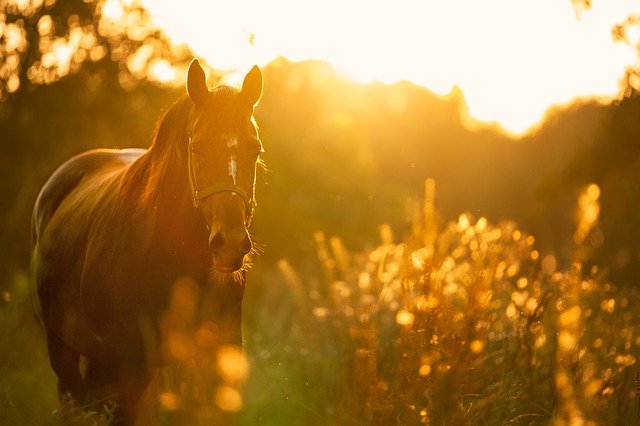A parabola is given as
\[ y=\frac{1}{4}x^2-1 \]
A circle is also given in the same plane:
\[ x^2+y^2=16 \]
Calculate the enclosed area of the upper part segmented by the parabola and the circle as shown in the figure.
Answer:
Find the intersections first. From equation of the circle, the ranges of \(x\) and \(y\) are \(-4\leq x,y \leq 4\). Solve for \(x^2\).
\[ x^2=16-y^2 \]
Plug it in the equation of the parabola.
\[ y = \frac{1}{4}(16-y^2)-1 \]
\[ y^2 = 4y -12 = 0 \]
\[ (y-2)(y+6) = 0 \]
 Therefore, \(y=2\) or \(y=-6\); however, \(y=-6\) is beyond the range. \(y\) takes only 2 for the coordinate. Using this result, we obtain \(x\) as \(\pm 2\sqrt{3}\), and both values are within the range. The coordinates of the intersections are (\(+2\sqrt{3}, 2\)) and (\(-2\sqrt{3}, 2\)). Now, find the area of the shaded part. As shown in the figure, it is subtracted the right angle triangle from the sector with 60 degrees. In other expression, (Area of the shaded part) = (Area of the sector) – (Area of the triangle). That is
Therefore, \(y=2\) or \(y=-6\); however, \(y=-6\) is beyond the range. \(y\) takes only 2 for the coordinate. Using this result, we obtain \(x\) as \(\pm 2\sqrt{3}\), and both values are within the range. The coordinates of the intersections are (\(+2\sqrt{3}, 2\)) and (\(-2\sqrt{3}, 2\)). Now, find the area of the shaded part. As shown in the figure, it is subtracted the right angle triangle from the sector with 60 degrees. In other expression, (Area of the shaded part) = (Area of the sector) – (Area of the triangle). That is
\[ = \left(\pi 4^2 \times \frac{60}{360}\right) – \left(\frac{1}{2}\times 2 \times 2\sqrt{3}\right) \]
\[ = \frac{8}{3}\pi – 2\sqrt{3} \]
The lower part is constructed by the functions between \(y=2\) and \(y=\frac{1}{4}x^2-1\).
\[ \int^{2\sqrt{3}}_0 \left\{2-\left(\frac{1}{4}x^2-1\right)\right\}dx \]
\[ = \left[3x-\frac{1}{4}\cdot \frac{x^3}{3}\right]^{2\sqrt{3}}_0 \]
\[ = 3 \times 2\sqrt{3} – \frac{1}{4} \times \frac{(2\sqrt{3})^3}{3} \]
\[ = 4\sqrt{3} \]
Then, the upper shaded and lower parts are added.
\[ A_{\mathrm{half}}=\frac{8}{3}\pi – 2\sqrt{3}+4\sqrt{3}=\frac{8}{3}\pi + 2\sqrt{3} \]
Therefore, the area is
\[ A = 2 \times A_{\mathrm{half}}=\frac{16}{3}\pi + 4\sqrt{3} \]

